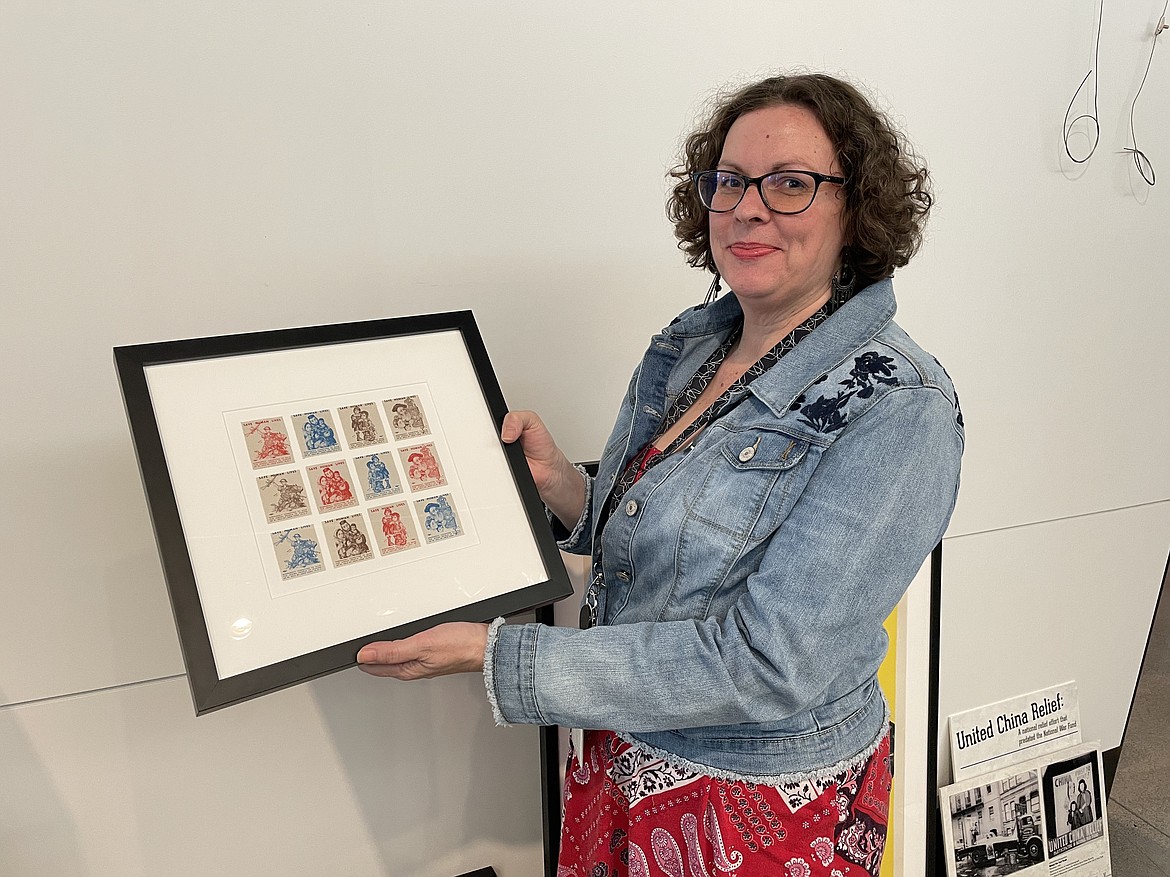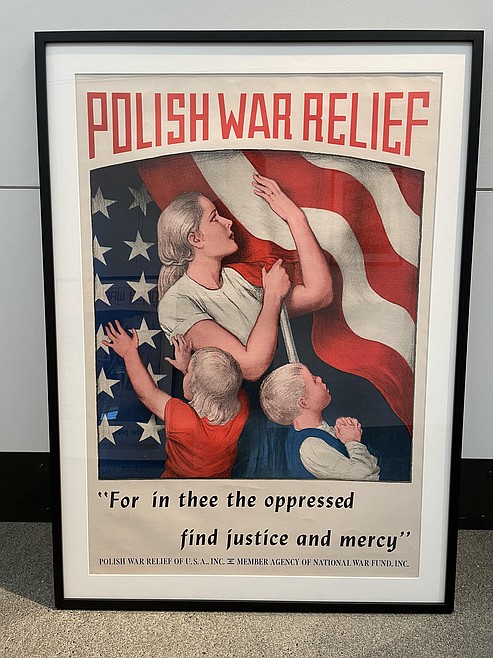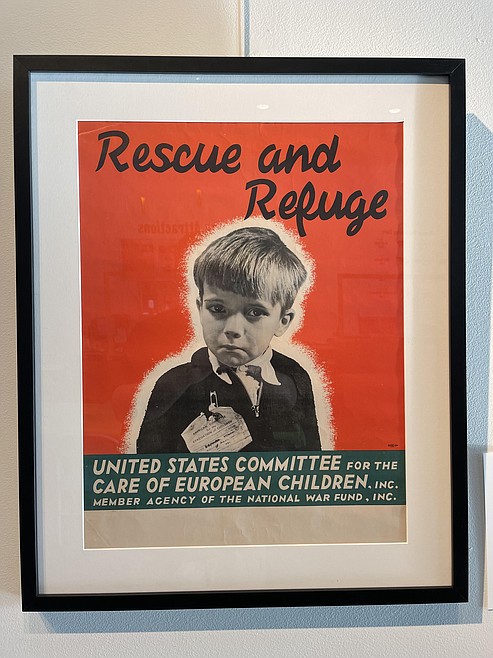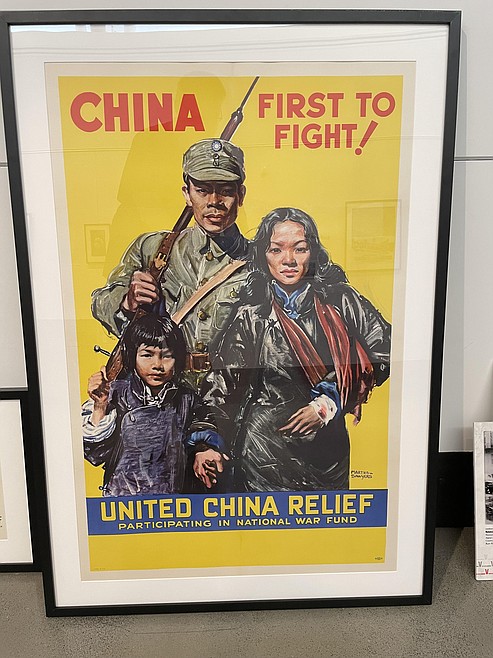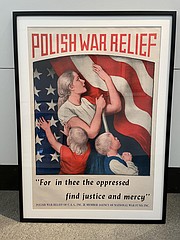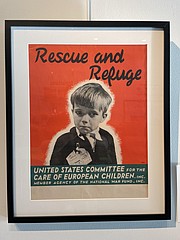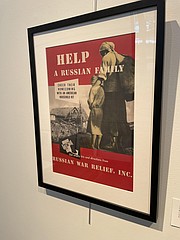'Work, Fight, Give'
MOSES LAKE — As supporters of Ukraine crowdfund to raise money to help the over 3 million refugees fleeing invading Russian troops, it’s good to remember this isn’t the first time Americans have been asked to help victims of war abroad.
As Dollie Boyd, manager of the Moses Lake Museum and Art Center, wanders the center’s new exhibit, a collection of American civilian relief posters from the WWII called “Work, Fight, Give,” she notes how the posters — often of frightened mothers protecting their families, or anguished, desperate children close to starvation — are designed to provoke an emotional response.
“A lot of these are really brutal, they’re pretty unflinching, and the way they depict the effects of war, especially on the civilian population,” Boyd said, noting the poster of a wide-eyed and traumatized European child with a tattered displaced persons card pinned to his jacket.
“You know, these are obviously actual photographs of children, but some of the illustrations, they’re kind of a gut punch,” she said.
The posters were part of the Allied relief effort to help those displaced by Axis invasions and occupations. They include actual posters from the time asking people to give to help children from nearly every country affected by the war — Poland, Norway, Greece, France, the Netherlands, Yugoslavia, China, the Philippines, the United Kingdom and Italy after the first collapse of Mussolini’s government in 1943.
The exhibit “Work, Fight, Give,” is organized by the Mid-American Arts Alliance, and runs at the Moses Lake Museum and Art Center at 401 Balsam St. through April 29.
The exhibit even has a poster soliciting “Fighting Funds for Finland” during the nearly four-month-long Winter War of 1939 and 1940 and two posters soliciting American relief for Russian families after the German invasion of the Soviet Union in June 1941.
Boyd said including the Russian posters — and they specifically say Russian, and not Soviet — was tricky, given the tenuous nature of the alliance between the USSR and the western Allies.
“We banded together to defeat the Nazis. There was still a lot of distrust and mistrust and so they kind of had to tread very lightly,” she said.
Boyd said many of the posters use national colors and styles, and often employed relatively famous artists like American Gothic painter Grant Wood, animators and artists working for Walt Disney and the creator of the WWI-era Uncle Sam recruiting poster, James Montgomery Flagg.
“He’s charging into battle,” Boyd said of Flagg’s WWII-era Uncle Sam. “In WWI, he’s just a recruiting tool. But here, it’s actually centering him in the fight.”
While the exhibit focuses on posters soliciting aid for the millions of refugees and others displaced by the war, that’s not all there is. The exhibit also includes a simple wooden box designed to raise money for China War Refugee Relief, several sheets of stamps — like Easter seals — for the same purpose and an old cloth bag designed to hold food aid.
Not forgetting American troops, the exhibit also includes several posters soliciting donations for the USO, which provided aid and relief to U.S. soldiers no matter where they served.
“The USO was pivotal in keeping soldiers entertained and giving them a little taste of home and entertainment during the war,” Boyd said. “Doughnuts and coffee and cigarettes. Those were essential supplies for the troops.”
Boyd said that while the power of visual images, especially of threatened women or hungry, frightened children, were potent even 80 years ago.
“I love the way they employed artists. They knew the power of a visual image,” she said. “These days, we can all go on the Internet and just slap a poster together. It doesn’t take us any time.”
“But here you can see the real thought and craft that goes into these and how they’re done. They were designed to get the maximum donations for whatever group they were appealing for,” Boyd added.
Charles H. Featherstone can be reached at cfeatherstone@columbiabasinherald.com
Correction: The Moses Lake Museum Manager is Dottie Boyd. This correction has been appended above.



